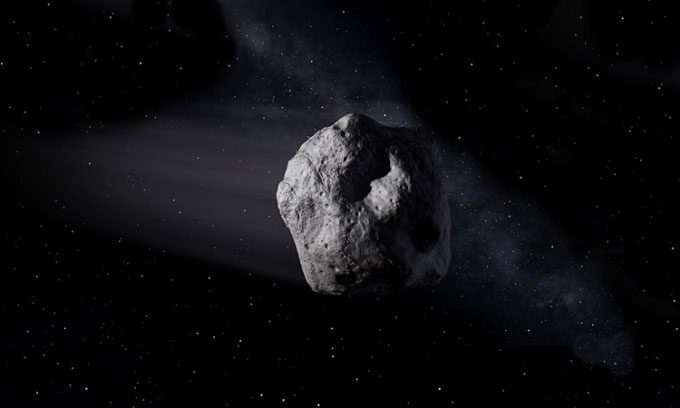The mission named Tianwen-2 will launch a probe to asteroid 2016 HO3 to collect samples and return them to Earth.
The China National Space Administration (CNSA) announced this plan on March 2, stating that the mission has received government approval and that scientists will hold an academic workshop in April. The main topics discussed at the workshop will include the basic plan, scientific objectives, mission payloads, operational models of Tianwen-2, and updates on asteroid research.
According to Ye Peijian, a leading spacecraft researcher at the China Academy of Space Technology, the core idea of the mission is to use a large booster rocket to send a two-part probe—an orbital module and a re-entry module—toward 2016 HO3.

Simulation of asteroid 2016 HO3. (Image: NASA)
After approaching the asteroid, the probe will orbit the celestial body, then fly very close to it and use a robotic arm to collect dust from its surface. The craft carrying the samples will return to Earth’s orbit and release the re-entry module, allowing it to land on Earth’s surface along with the asteroid dust samples.
Once the module is released, the orbital spacecraft will head toward comet 311P located in the main asteroid belt to continue its scientific exploration missions, Peijian noted.
Scientists have currently identified about one million asteroids in the solar system, over 20,000 of which are in close proximity to Earth. 2016 HO3, also known as 469219 Kamo’oalewa, was first discovered in April 2016 by an asteroid survey telescope at the Haleakala Observatory in Hawaii.
2016 HO3 is considered a quasi-satellite of Earth due to its unique orbit. (Video: NASA)
2016 HO3 orbits the Sun in a way that it continuously “accompanies” Earth. NASA experts indicate that this celestial body is too far away to be considered a true satellite, but it remains the best and most stable example of a quasi-satellite to date.
Tianwen-2 is China’s second interplanetary mission, following Tianwen-1, which was launched to Mars on July 23, 2020, and included an orbital module, a lander, and a rover. Since landing on the red planet’s surface in May 2021, the rover Zhurong has traveled nearly 2,000 meters and collected a significant amount of raw data so far.


















































